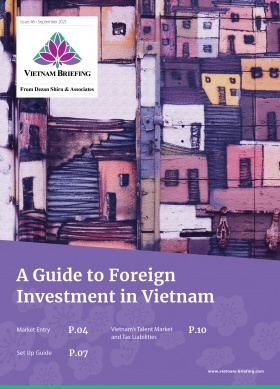Why Vietnam’s Free Trade Agreements Will Play an Important Role in 2022
Vietnam’s free trade agreements, along with the recent Regional Comprehensive Economic Partnership (RCEP) are expected to play a major role in helping Vietnam’s economic growth this year. As Vietnam further opens up its borders for international travel, the government wants to ensure that the country returns to its pre-pandemic growth. Vietnam’s FTAs and other bilateral agreements are likely to aid and play a significant role in the medium to long term.
New generation FTAs
While Vietnam is one of the countries with several FTAs, most recently it has signed new generation FTAs such as the Comprehensive and Progressive Agreement for Trans-Pacific Partnership (CPTPP), EU-Vietnam FTA (EVFTA), UK-Vietnam FTA (UKVFTA), and most recently the RCEP. While these agreements will not only help Vietnam advance its economy and production network, it will also help the country conform to labor standards while modernizing labor laws and industrial relation systems. While the government will continuously need to work on reforms, being part of such agreements gives an impetus.
As per the Ministry of Industry and Trade (MoIT), the EVFTA, itself has helped Vietnam’s exports despite the pandemic. In addition, more than 200,000 certificates of origin were issued in 2021 for Vietnamese exports worth US$7.8 billion. In 2021, the UKVFTA helped boost trade between Vietnam and the UK reaching close to US$6.6 billion. Similar increases were also noted with CPTPP with exports to Canada and Mexico increasing.
Investors can also access the ASEAN Framework Agreement on Services (AFAS). This agreement comprising of ASEAN countries and liberalizes trade in several industries such as education, sanitation, hospital services, and tourism.
Nevertheless, businesses should ensure that they are making use of Vietnam’s FTAs which can no doubt be complex to implement. However, the cost savings can be significant given the reduction in tariffs depending on the various markets. Businesses should especially pay attention to rules of origin, technical and hygiene standards, labeling requirements, import-export regulations as well as brand guidelines.
Government support and high growth industries
The MoIT has further stated that it will look at efforts to implement the current FTAs and plan for new ones which ensure a stable market for Vietnam. Some steps that the MoIT has outlined for 2022 include:
- Work with relevant agencies on infrastructure, strengthen connectivity and reduce logistic costs;
- Work with border provinces to ease customs procedures for the import and export of goods;
- Ease challenges in seaport infrastructure;
- Raise awareness on key market developments and niche markets;
- Facilitate digital transformation and application of IT; and
- Propose trade remedies to protect the interest of domestic industries.
Vietnam is currently negotiating the Vietnam-EFTA agreement, which involves Vietnam and the EFTA (Switzerland, Norway, Iceland, and Liechtenstein), and Vietnam-Israel FTA.
Businesses can further look at which industries can benefit from FTAs, and tailor their production according to current demand and trends. For example, in January 2021, Vietnamese exports were valued at US$29 billion increasing 1.5 percent over the same period last year. Out of this, seven commodity groups, earned over US$1billlion each accounting for a total of 63.3 percent for total export turnover as per the MoIT. Some of these commodity groups were:
- Phones and components US$4 billion;
- Computers, electronic products, and components (US$3.5 billion);
- Textiles and garments (US3.3 billion); and
- Agro, forestry, and fisheries (US$2.67 billion).
2022 important year for economic growth
This year will be important for Vietnam as it looks to bounce back to pre-pandemic growth levels after strict lockdowns and production stoppages. Businesses that were drastically affected last year are also eager to increase trade and revenues as they look to limit losses from last year.
Therefore, FTAs will play an increasing role in the country’s economic growth as businesses look to bounce back. The government is keen to promote FTAs and as mentioned earlier has outlined steps to help businesses make use of such agreements. Nevertheless, there will be challenges; sea freight rates remain high as containers are limited affecting global supply chains. This has also resulted in increased costs in raw materials as well as higher delivery times. Complex administrative procedures, customs delays, and infrastructure are also factors that have hindered businesses from making use of FTAs.
Nevertheless, investors are ready to expand business coverage and Vietnam’s government has realized this outlook and provided investor-friendly policies aimed at attracting investment to promote strong economic development. While further pandemic variants are possible, Vietnam’s high vaccination rate will help keep businesses open; the government has reiterated its plans to keep factories open with a ‘live with the virus’ approach.
About Us
Vietnam Briefing is produced by Dezan Shira & Associates. The firm assists foreign investors throughout Asia from offices across the world, including in Hanoi, Ho Chi Minh City, and Da Nang. Readers may write to vietnam@dezshira.com for more support on doing business in Vietnam.
We also maintain offices or have alliance partners assisting foreign investors in Indonesia, India, Singapore, The Philippines, Malaysia, Thailand, Italy, Germany, and the United States, in addition to practices in Bangladesh and Russia.
- Previous Article Binh Phuoc Province: An Emerging Investment Destination
- Next Article Вопросы и ответы: ведение бизнеса во Вьетнаме – перспективы на 2022 год







